The Gorgon (1964)
Directed by: Terence Fisher
Written by: Anthony Hinds, J. Llewellyn Devine, John Gilling
Starring: Barbara Shelley, Christopher Lee, Peter Cushing, Richard Pasco
UK
AVAILABLE ON BLU-RAY [REGION ‘A] AND DVD
RUNNING TIME: 83 min
REVIEWED BY: Dr Lenera, Official HCF Critic
In the town of Vandorf in 1910, Sascha Cass flees her boyfriend Bruno Heitz after a row and is turned to stone, causing Bruno to hang himself. The official verdict, aided by false testimony given by Dr. Namaroff, is that Sandra was murdered by her lover who then killed himself in a fit of remorse. This fails to satisfy Bruno’s father Professor Heitz, who discovers that similar deaths have occurred in Vandorf which may be connected to the legend of Megaera, last of the three Gorgons. Heitz visits the nearby Castle Borski and catches Megaera’s petrifying gaze, but is able to leave a letter to his other son Paul before turning to stone….
Full of gloomy fatalism worthy of the most downbeat film noir and absolutely oozing Gothic atmosphere, The Gorgon, perhaps partly because it doesn’t feature one of the typical monsters [though the story does contain werewolf elements], doesn’t seem to get much attention, but I feel it just about makes the Hammer top ten, being extremely suspenseful and a little bit scary, and very well made in pretty much every department except for one sadly notable aspect [though that doesn’t ruin the film that much really]. It’s also genuinely romantic in a way unusual for Hammer but which is very pleasing, at least in this instance, while it’s quite surprising that Terence Fisher and company were even able to make such a downbeat picture whose ending offers little more hope than the finale of The Damned. It’s also genuinely moving, in part due to a simply superb performance by Barbara Shelley who was surely the best actress out of all of Hammer’s glamorous starlets. A lot of heart was obviously put into this one [which also perhaps signals the start of Fisher’s more ambiguous and complex view of good and evil], and I always get so caught up in it that I find myself willing events to not pan out the way they do. And yet it has hardly any blood.
Unusually, The Gorgon originated as a story synopsis which its writer, John Llewellyn Davine, submitted to Hammer, with the possibility of it being made into a film, in 1963. John Gilling expanded it into a screenplay, removing some of the sillier aspects like people walking with periscopes to avoid the Gorgon’s direct gaze, but producer Anthony Hinds changed a few things, notably the opening [which didn’t originally feature a woman modelling topless for her rakish boyfriend], and Gilling changed some of them back, though he always expressed disappointment with the film which he said could have been really good [it is anyway]. Shelley was originally going to play both Megaera and her human counterpart, but producer Anthony Nelson Keys vetoed this, thinking that audiences may suspect Carla Hoffman was Megaera too early [which is a ridiculous reason, as it’s still really obvious], and Prudence Hyman played the monster. She was intended to have live grass snakes on her head, but Hammer changed their mind and opted for models [more on that later]. The Gorgon was shot entirely at Bray and Black Park. The BBFC expressed concern about the hanging, a shot of a brain and a decapitation when they viewed a black and white print, but the finished film came out unaltered by the censor’s scissors. At the last minute, Keys requested some changes, but only two – a short written prologue and the use of a matte painting from Evil Of Frankenstein – were done. Like Kiss Of The Vampire, The Gorgon got reasonable reviews, and, double billed with The Curse Of The Mummy’s Tomb, did reasonably good business.
Megaera, though unseen, kills someone right away, a woman who runs after her bounder of her boyfriend after a quarrel about her pregnancy. Now, aside from how tense and eerie they are, something that is notable about the Megaera scenes is the way James Bernard’s Gorgon music, combining a rare electronic instrument called the novachord with a soprano singer, acts as not just score but as Megaera’s siren-like cry, luring people to go to her. It’s quite audacious. Of course the Vandorf folk like to pretend that nothing strange is going on and Dr. Namaroff positively lies in court so Professor Heitz will stop investigating his son’s strange death, but Heitz will not be put off. He finds some stuff out which will surprise anyone who knows their Greek mythology, the three Gorgons not being called Stheno, Euryale, and Medusa, but Tisiphone, Megaera, and Medusa. Megaera could be the one on the loose, and some think that she’s possessed one of the inmates of the asylum where Dr. Namaroff works, but, as I said earlier, it’s clear which character actually has been taken over. Knowing it this early makes Carla’s predicament more painful for the viewer. We soon get probably the creepiest of the Gorgon scenes as Paul, Heitz’s other son and now in Vandorf because of the letter written by his brother as he was dying due to the Gorgon, receives a visit from the creature just outside the house he’s in and just manages to catch her gaze reflected in water. The subsequent makeup on Richard Pasco, indicating that he’s turned just a bit to stone, is very impressive.
Christopher Lee’s character Professor Karl Meister is briefly seen early on but then doesn’t show up till over half way through, and by then Paul, despite been physically changed after an encounter with her other ‘personality’, is head over heels in love with the mysterious Carla, which isn’t too surprising as Fisher and cinematographer Michael Reed seem to clearly be in love with her too considering the way she’s shot and often has the top of her hair bathed in light. Namiroff is also in love with her, and we actually feel sorry for him, especially when Carla tells him that he “disgusts her”, while not being entirely sure of what he’s trying to do. Sure, he wants to keep Carla from bring discovered, but what does he intend to do when she ‘turns’? He’s an interesting character with shades of both Van Helsing and Frankenstein though they never seemed to be besotted in such a way by a female [in fact Van Helsing never appeared to be interested in women at all]. Carla wants to go away with Paul one day but refuses to do so on the following day because the full moon is about to happen. Paul doesn’t seem to believe it when Meister tells him the truth about her, but I think he does [after all, she behaves so oddly] – he just doesn’t want to believe it. These four characters circle round each other [sadly Cushing and Lee only share one scene] until the climax in the splendidly dilapidated [nice to see set designer Bernard Robinson given the chance to build a set unlike his usual bright, ornate ones, though he seems to be experimenting here and there in this film such as his weirdly simple, almost expressionistic cemetery set] Castle Vorski, which includes a rather good fight between Paul and Namaroff, a terrible looking severed head [Hammer never really got those looking right], and a really sad ending, the dying Paul trying to reach Carla’s body before he perishes possibly being the most moving of all Hammer’s endings.
The Gorgon mostly avoids gore, a scene with a brain [which also features the immortal line from Cushing: “Never ceases to amaze me why the most noble word of God, the human brain, is the most revolting to the human eye”, which he should have really delivered when he was playing Frankenstein] actually coming across as gratuitous. The main flaw with The Gorgon, aside from the script not being really able to explain the nature of Megaera, is that its monster just isn’t very impressive when seen properly, the painted face and rubber snakes which wobble just a little almost provoking laughter, though it’s doubtful that they could have done much better with such a difficult creature to show convincingly. It does stand out though considering the sterling work done elsewhere, and I wish the decision had been made to cut some of the shots. It would have helped a lot, though there’s so much else about it that is worthy of praise. Just take the whole look of the film. Michael Reed, who photographed a few Hammers but never did as many as Jack Asher or Arthur Grant, generally gave a colder appearance to his films but there’s tremendous contrast here between the bright, colourful interiors and the stark, muted but rather beautiful exteriors full of faded autumnal colours, while the obvious painted backdrops actually add to the effect of seeing what is basically an adult fairytale being played out. Then there are some wonderful individual shots like the area behind the green dress-wearing Megaera being bathed in green as she advances towards the viewer. Meanwhile Fisher seems in total control of his material, keeping the pace taut despite there being not really being a lot of action and staging many scenes, even simpler ones, with considerable flair.
The performances are uniformly fine, with Cushing and Lee [though saddled with unconvincing hair and moustache makeup] allowed to play a little against type, though in some ways Lee’s good guy isn’t really any more sympathetic than Cushing’s misguided, lovelorn scientist]. Richard Pasco nicely evoking his character’s physical and emotional pain, and Shelley is just magnificent all-round. Just look at the way her eyes change, such as when she realises she hates Namaroff. Bernard’s score is allowed to become a prominent part of the film, with lots of scenes where the music takes the lead in providing the suspense. The novachord/vocal stuff is haunting, plus by contrast Bernard also supplies a very tragic love theme which underlies the impossible love of Paul and Carla. The Gorgon ends up being almost heartbreaking, its most powerful bit being Paul and Carla’s farewell when the moment when Carla may have had some salvation has just passed, the couple’s outstretched arms and Shelley’s extremely subtle acting leaving an indelible mark. It’s a highly pessimistic, bleak film, with most of its characters seeming to love or care too much, but also a deeply romantic and compassionate one. It may not be Hammer’s best picture, but there’s something special about it nonetheless.
Rating: 










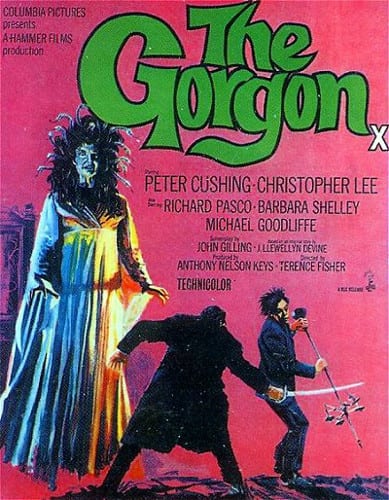
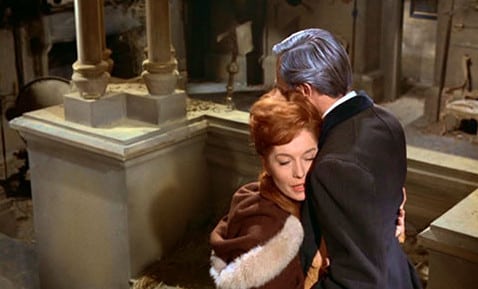
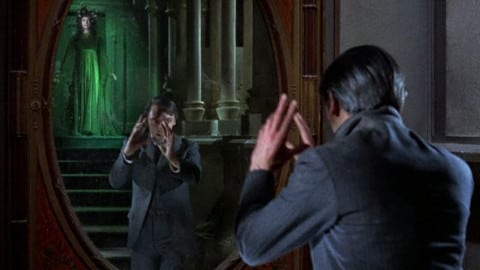

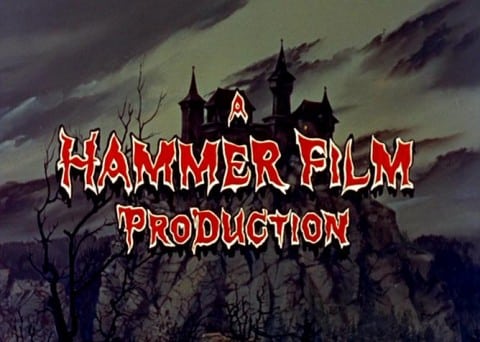
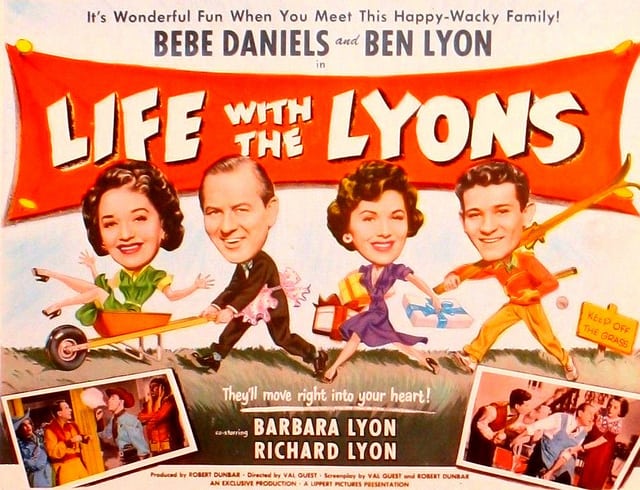
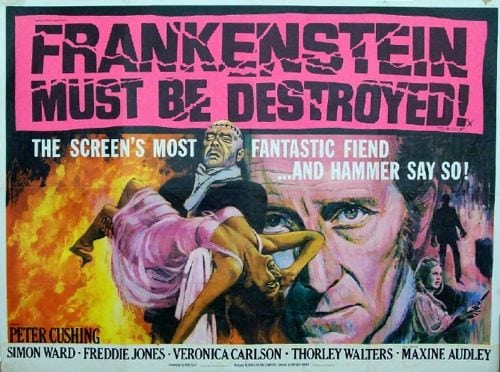
Be the first to comment